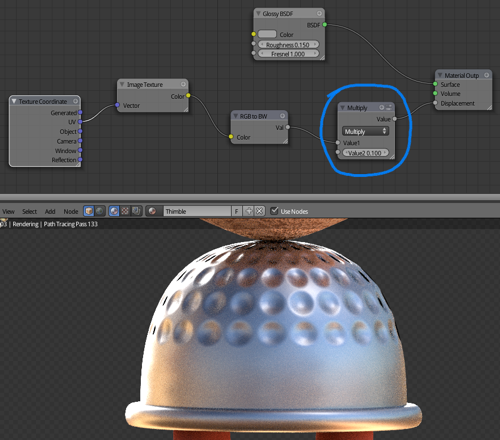

So that, if you set the color space in one material, this will affect all the others that are using the same texture. When using an image texture node, the color space information is given by or set to the image texture itself.


It is commented as 'Log based filmic shaper with 16.5 stops of latitude, and 25 stops of dynamic range'.Ī link to OCIO configuration in the Blender repository. 709 (Full Range) and is commented as 'Blender native linear space'.Īgain please refer to this answer. The configuration is linear (as said in it name) and is done from a table giving parameters of this operation for each color channel.Ĭorrespond to Rec. The comment in config.ocio says "color space used for images which contains non-color data (i,e, normal maps)". But it is semantically different as it is for things we know to be 'non color'. This is similar to 'raw' from the calculation point of view. 'Raw' is the image encoded data as it is. It also has a transformation table defined in it. Stands for Standard RGB and is the "default color space for byte image" as defined in 'config.ocio'. The response value for them is defined in the OCIO configuration. Transformations can be direct or reverse.Ĭoncretely, what about 'XYZ', 'sRGB', 'Raw', 'Non-color', 'Linear ACES', 'Linear' and 'Filmic-Log'?ĬIE XYZ is a calibration and its result is analogous to the LMS color space which corresponds to the cones response of the human eyes. The general principle of OCIO configuration seems to be giving a range to the input data and apply a transformation table to it. The best is to read this answer from troy_s to know more. Linear ACES is one of the possible option for the texture node.įilmic is another calibration approach. For image calibration it has been defined by Academy Color Encoding Specification (ACES). In this directory, we can find a file called 'config.ocio' (describing the possible configurations) and two subdirectories 'filmic' and 'lut' (containing data tables used by these configurations). And OCIO is based on a configuration that can be found in 'Your installation path\2.8\2.80\datafiles\colormanagement'. OpenColorIO is a set of libraries (programs) that are provided OCIO organisation and these libraries are open source.įrom that, when an image is processed (in our case for texture nodes) it is given to OCIO to do it. But more globally, OCIO can process image data transformation 'the way you want'. The main goal of OCIO is to allow to transform image data into device rendered image data which fits the best to human eyes perspective as (for instance) our perception of light intensity is not linear (so intensity can be coded or manipulated linearly, as it is, but rendered differently).

maybe to allow Blender to run on some low level hardware?). This processor can be based on OCIO or be a 'fall back' one if OCIO is not present (I don't know why it could be absent.
#BLENDER 2.8 QUICK NODE CODE#
I've dig a bit into Blender code and into OpenColorIO (OCIO) documentation and my ( very young and superficial) understanding is the following.īlender uses a processor component to handle image data. Use one of the others (depending on your needs) for what is effectively a color.Use "non-color" for inputs that are supposed to be spatial (3D) vectors or simple factor values.Blender 2.80: Eevee lists what shaders the engine supports or not.However, note that converting it to a mesh will make light converge to its centre, which is probably what you want 2 References In particular, if you model a vessel from a curve you apply the Screw modifier to, it will converge to a seemingly random point I couldn't for the life of me adjust.
#BLENDER 2.8 QUICK NODE HOW TO#
One aspect I still don't understand, is how to control where the light converges to. You can adjust the IOR of the Fresnel node to change the thickness of the effect, but most people prefer squeezing in a Gamma node between the Fresnel and the MixRGB nodes, which I didn't bother doing in this simplest of examples. Nothing keeps you from adjusting the Metallic and Roughness values of the Principled BSDF node – I've seen people even touch the Specular level – but none of this is necessary. The two essential parameters are the colours of the MixRGB node, typically both the same hue but with different values, the first one being that of the metal, the second one that of the light hitting it.Ĭanonical Node Setup for Simulating Anisotropy The following node setup will do the business of simulating anisotropy. Yet it's sufficiently versatile to address all the needs. But that's because it cuts all sorts of corners at the cost of realism. 1 Node Setup for Simulating AnisotropyĮevee is insanely fast – well, it has to be, being supposed to be real-time. The Eevee render engine doesn't currently support the Anisotropic node, but there is a way to simulate it with a simple node setup.


 0 kommentar(er)
0 kommentar(er)
